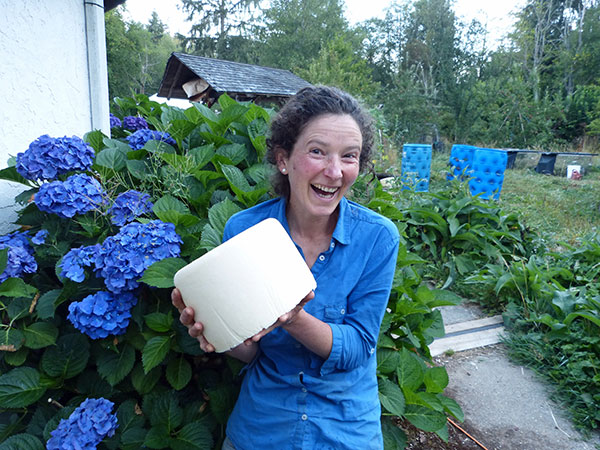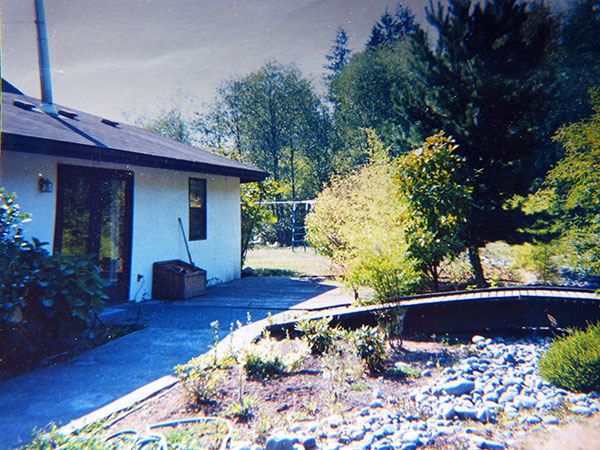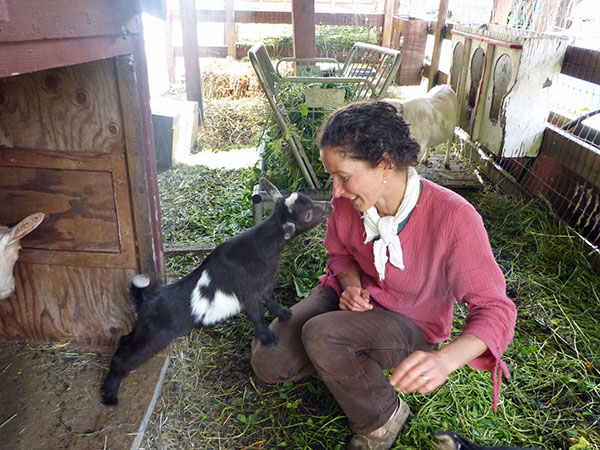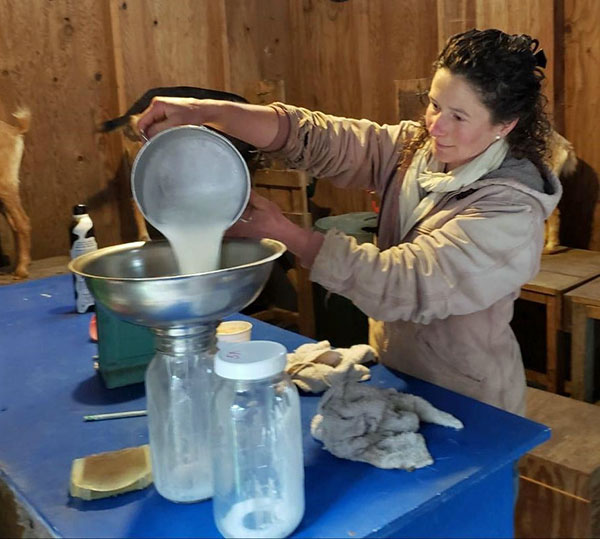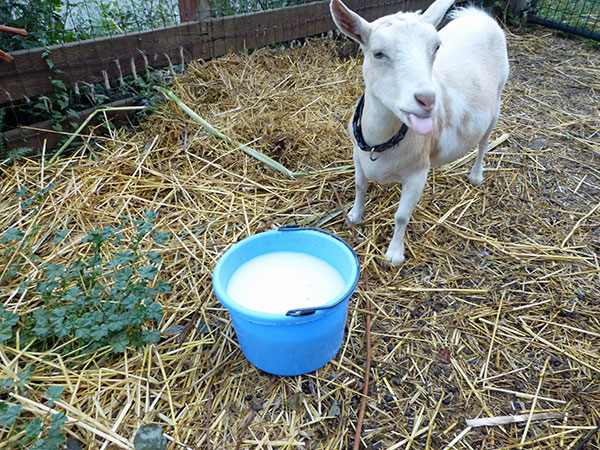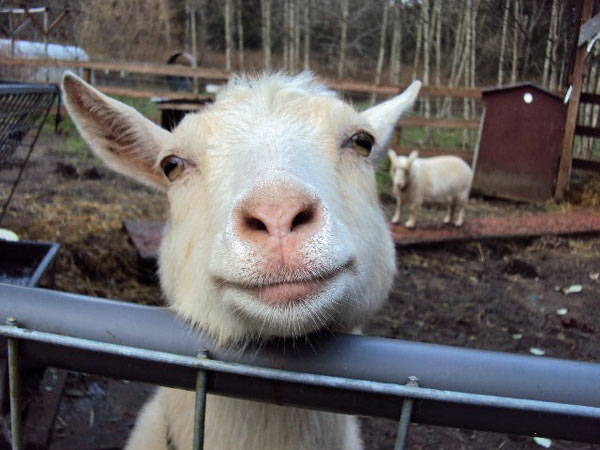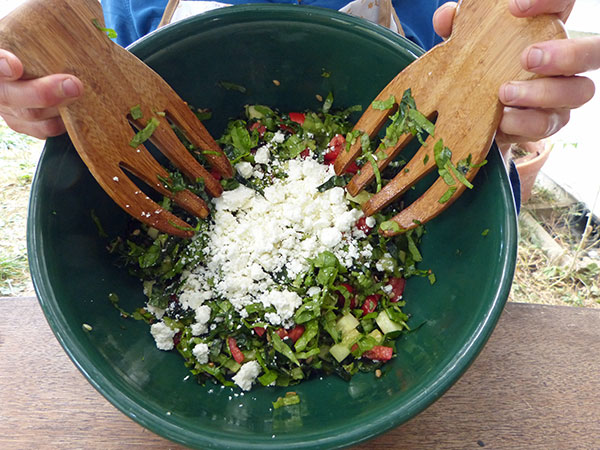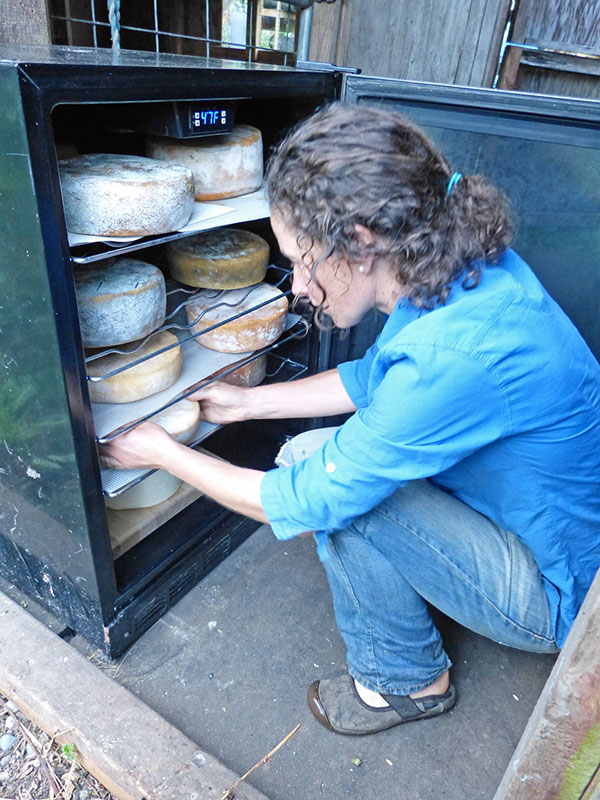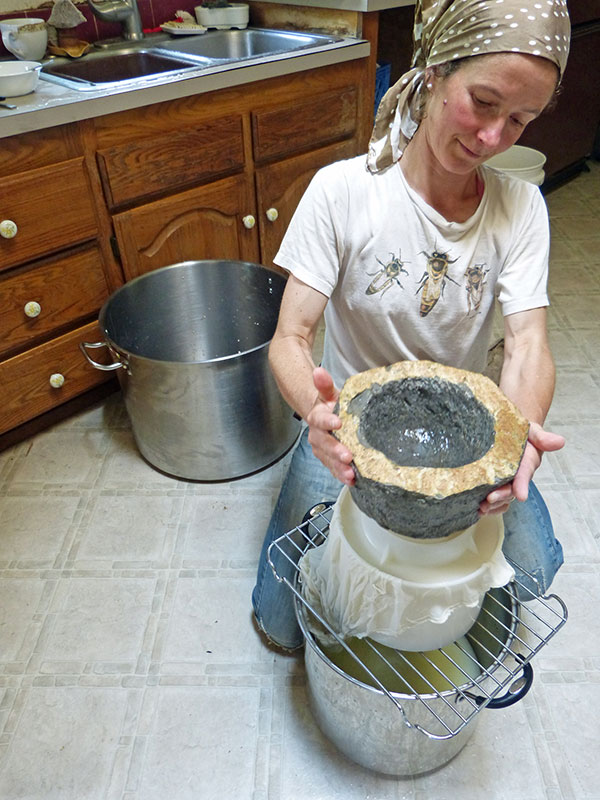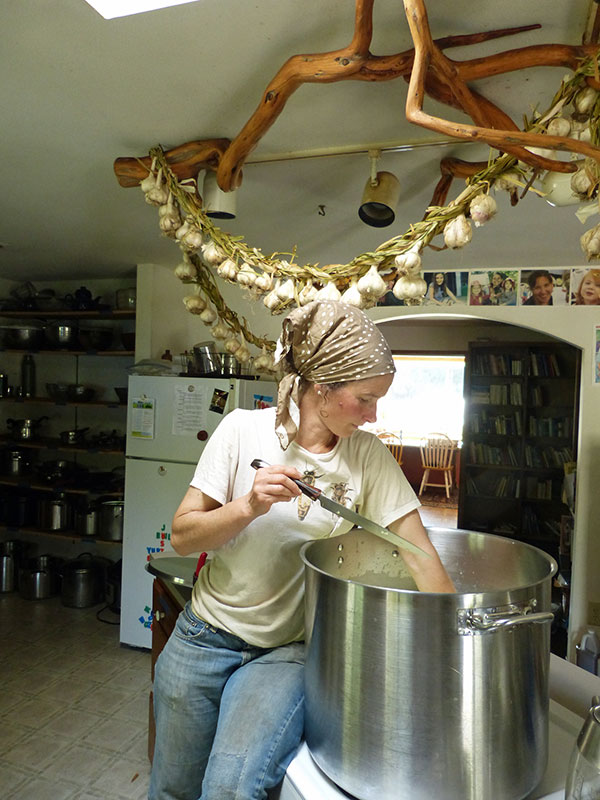Alexia is one of the founders of Hawthorn Farm, located on 8 acres in a suburb of Seattle. She has been on the farm for 18 years, learning and teaching homesteading skills, including: raising goats, chickens and ducks, harvesting animals, using draft horses, gardening, fermenting, spinning and weaving and more.
Cheese making is an essential aspect of Alexia’s life as a homesteader and we’re very grateful that she found the time to tell us about her experiences with it.
Alexia’s Story
I grew up in central California, but travelled since I was an infant – my mom is from Chile, so I had an intercontinental childhood. I got toted to Chile when I was two months old, and spent several months out of every year growing up in Chile. That exposed me to a wider range of flavors, including the intriguing quesos of the southern hemisphere!
When Iwas 23, in 2001, I moved to Washington State to study naturalist skills at Wilderness Awareness School, and just kept growing more food! My interest in science and natural history collided with my love of cooking, and so I run a teaching homestead called Hawthorn Farm.
This place wasn’t a farm when I moved here in 2003 – it was a suburban house with a tired lawn and overgrazed pasture.
Our motto is “reclaiming suburbia,” which we do through planting trees, tending gardens, working with neighbors, and of course making and sharing delicious cheese. We’re grateful every day that the land that couldn’t feed us in 2003 can now provide a delicious diet for many species, including the humans who live here.
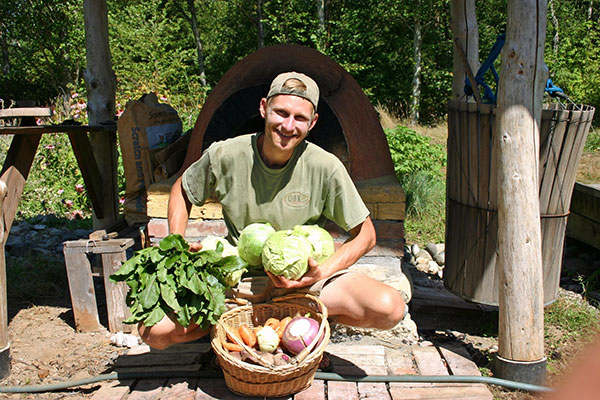
One of the 10 humans living on the farm is my husband, Daniel, shown here on his 40th birthday last year.
Our yearly crop of baby goats is a neighborhood highlight.
Our goats:
Being lactose-intolerant, I avoided eating dairy for years. Then I fell in love with a goat at the county fair.
I brought her home, plus a buddy for her, and then had to figure out what to do with the milk once the kids appeared.
My college chemistry classes, joy in animal husbandry, and love of feeding people met their perfect partnership in making cheese, and with help from Gianaclis Caldwell’s excellent books (click here), I was on my way towards making edible cheese. The chickens got to eat a lot of experiments.
I love my goats, so I keep them happy.
Happy goats make milk, lots of milk.
My cheese:
I’m not naturally a very hygienic person, but cheese making rewards me for cleanliness. The cheeses taste better when I pay attention to every detail of the process. Fortunately, I have only myself to please, and since I make cheese as part of a self-sufficient homestead, I resolve to like what I make.
Right now I am on a Swiss kick and we’ll see how that turns out in about 6 months. Last year I went through a washed-curd phase. Every kind of cheese yields new insights into the process.
I make buckets o’ chevre, of course. Greek yogurt galore. Eating one especially creamy smooth batch of it, my husband exclaimed, “This is like magic pillows!” We all cracked up, of course, and still refer to goat udders as “magic pillows.”
Feta is a staple. Homegrown tomatoes, cucumbers, and basil with a big square of feta crumbled on top? That’s our lunch from August through October.
I’ve tried my hand at soft mold-ripened cheeses but I am just not diligent enough for them. Tommes are more my style – practical, nutrient-saving farmstead cheeses.
Goudas get gobbled up by our ten-person household.
When I can go milk a friend’s cow, I get enough milk to make Sbrinz. Because I am a subsistence cheesemaker – as in, I make cheese to capture the solar energy that falls on our farm – I am interested in easy-to-store cheeses to liven up our homestead meals.
My husband and I spent all of 2017 eating only hand-harvested food, so goat products were an important part of carrying us through the year. We continue to enjoy eating primarily what we grow. The amazing goats turn overgrown zucchinis into, well, magic pillows.
My favorite tools:
Happy goats and my hands are my most important tools. When I started 8 years ago, I underestimated the amount of skill it takes to manage a dairy herd, even if that herd is three small goats. Now my forearms are made of beautiful rippling muscles. It’s a good look.
Cheese forms are the cheese-specific tool I use the most – ones that can hold up to 8 pounds of cheese curds.
A couple of dedicated cheese pots (with orange tape on their handles that say, “ONLY FOR ALEXIA’S CHEESE!”) are essential, along with the sturdy rack that holds the cheese over the whey pot.
My cheesemaking thermometer from New England Cheesemaking Supply tells me what I need to know about multiple batches of cheese and yogurt every week. Rather than aim to replicate a particular type of cheese, I take a look at my equipment on hand and say, “What can I make with this?”
My challenges:
My husband came into the kitchen yesterday and saw my grim face as I pulled jar after jar of milk from the fridge. “The tyranny of the home dairy, huh?” he said.
With this tidal wave (okay, just two gallons a day) of exquisite, creamy, vibrant milk, I feel duty-bound to do something with it. This is a good problem to have. But after three months of making cheese multiple times a week, I wonder if I’ll ever NOT have my arm in a cheese vat stirring curds.
I also don’t get reproducible results. I know I should be taking notes on every cheese, and I even have a notebook right next to the kitchen, but for some reason taking meticulous notes saps the fun out of it. I don’t know why. Maybe the thrill of uncertainty when I cut into a mystery wheel?
I keep enough track of the cheeses that I know I am aging them over two months for safety’s sake, but otherwise I would not be able to tell you whether or not I put lipase in any particular wheel, or how much culture I used. My motto again: “I have only myself to please.” And I do get enormous pleasure from making and aging cheeses. The occasional bland or crumbly wheels make the successes that much richer.
My goals:
My goal is to make nutritious cheese from as little off-farm inputs as possible. As I mentioned, my husband and I spent 2017 eating only hand-harvested food. That means food that was foraged or grown by us or by friends who picked it directly – no grocery store or money involved. If we wanted salt, we went to the ocean and got sea water to boil down. It took a lot of buckets of ocean to make all my cheese salt for the year! Our goats (and a short-term cow) were our only source of dairy products. I want to provide the bulk of the dairy for our now 10-person household, and do it beautifully.
Another way to describe my cheese making goal is to capture the sunlight and “waste products” from our garden and turn it into gold. The alchemical goats take overgrown zucchini, straggling blackberry brambles, pruned apple branches, and turn them into delicious food. And they look cute doing it. I’m not a post-apocalyptic prepper person, but I do feel satisfaction when I think, “If trucks stopped coming to the grocery store, I would still have delicious cheese.”
The more delicious my cheeses are, the more I hope to inspire others to enjoy a resilient and satisfying lifestyle. Whether or not you choose to devote your life to pampered goats, there are many ways to use observation, skill, and patience to feed ourselves and our communities.
Hawthorn Farm
17340 NE 195th Street
Woodinville, WA 98072
(425) 286-5640
Website: https://www.hawthornfarm.org
Email: hawthornhealstheheart@gmail.com
Facebook: https://www.facebook.com/hawthornfarmheals

